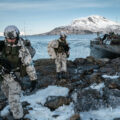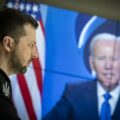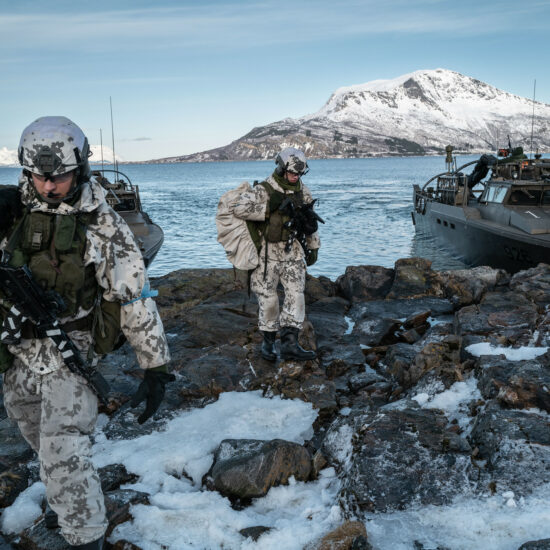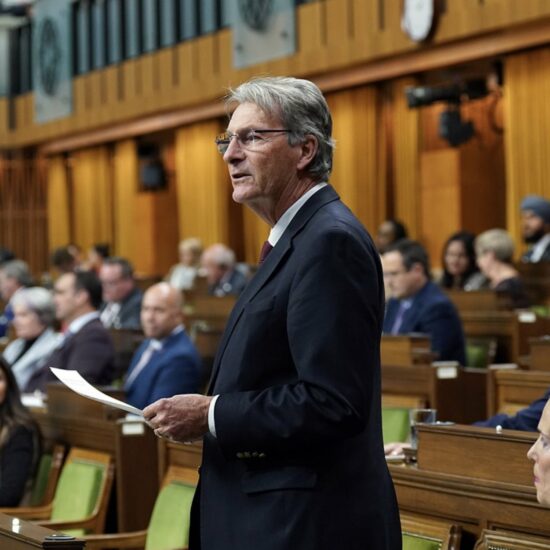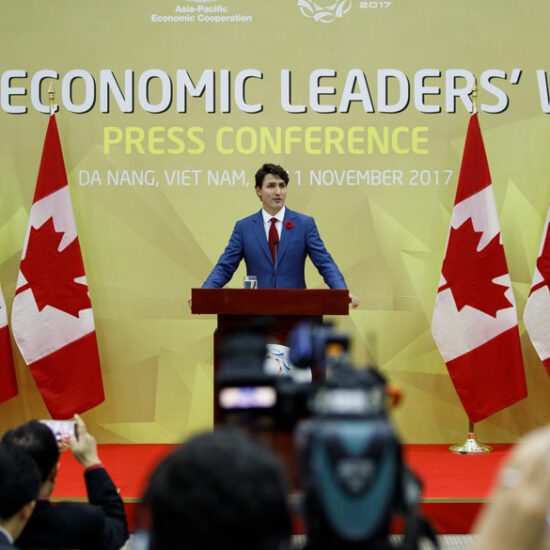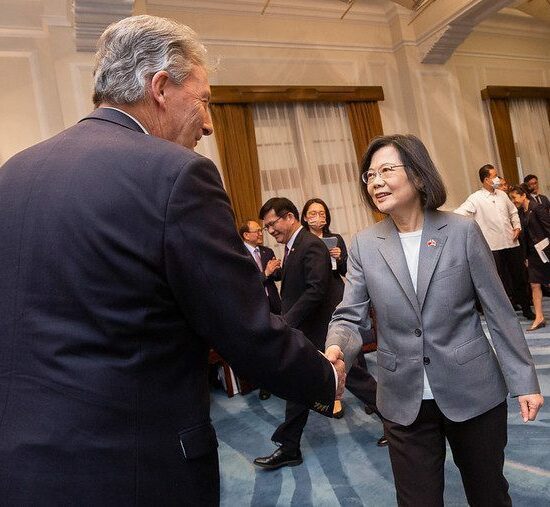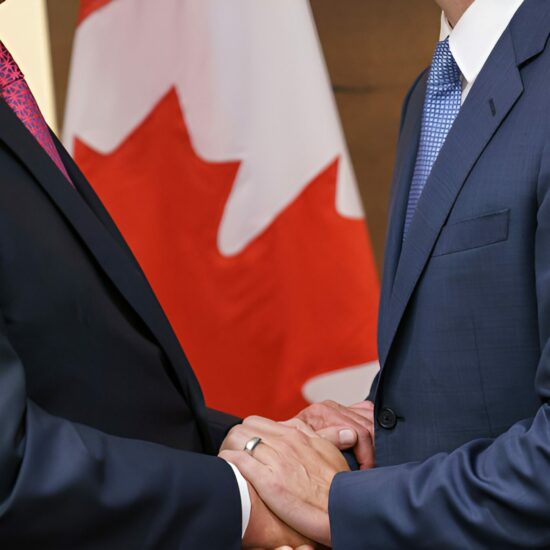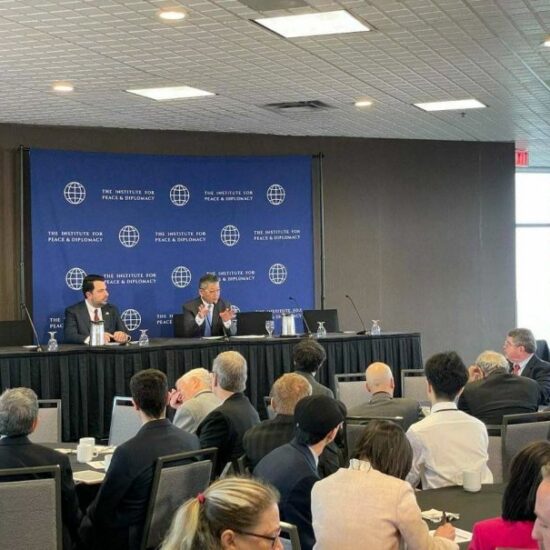
By Paul Evans
This paper is published as part of a series under IPD’s China Strategy Project.
For at least forty years, universities have been a major dimension of Canadian connections with China. Recruitment of Chinese students, study abroad programs for Canadians, research partnerships and collaborative programs involve virtually every Canadian university and college with hundreds of Chinese partners.
In commercial terms, the educational services sector (including all levels of education) was Canada’s largest export to China in 2019, valued at $5.72 billion and supporting 57,000 jobs. In that same year, there were more than 100,000 Chinese students registered at Canadian universities and colleges. At the University of British Columbia alone, tuition fees from international students from China amounted to $184 million, about 9% of total revenue. The university has research and exchange partnerships with more than one hundred different institutions in China.
The pattern has shifted in the past decade from capacity building to mutual advancement. In an increasing number of fields, Chinese universities are improving and Chinese partners are becoming world class.
These links have been affected significantly by COVID-19, with travel and in-person contact curtailed or postponed. Yet the view that things will return to normal when pandemic restrictions lift is mistaken.
For forty years there were compelling economic and geo-strategic reasons for expanding these connections, tied to a national engagement strategy. In an era of geopolitical contestation, techno-nationalism, negative public perceptions and Cold War tensions, the mood and dynamics are changing.
There is growing evidence that the flow of Chinese students is peaking and will likely decline over the next five years. Internationally, the deterioration of the Sino-American relationship and deepening mutual suspicions have put new constraints on academic exchanges, especially in the STEM and health areas. On both sides, research is increasingly securitized as part of a techno-nationalist approach to a peer strategic competitor.
At home, Sino-Canadian diplomatic relations remain cold even after the return home of the two Michaels and Mme. Meng. Public attitudes about China are at an all-time low, media sentiment still sharply negative. On campuses across the country, concerns have risen about cyber intrusions and potential espionage, student safety, harassment and surveillance, the academic atmosphere in classrooms and new forms of self-censorship. Questions are increasingly raised about cooperating with partners who may be connected to repressive policies or human rights violations.
While research collaborations are just one part the picture, they are at the heart of current thinking in Ottawa. They are generating media commentary and the publicized attention of at least one provincial government. They involve multiple agencies with different mandates and perspectives at the crossroads of national security considerations, aspirations for open science, economic competitiveness and innovation, and the globalization of knowledge. And they are a new chapter in the interaction between security and intelligence agencies and a university sector determined to maintain its institutional autonomy and international mission.
This paper describes the current state of play and make some suggestions on what must be done to make a new phase of collaborations sustainable. Keeping the door open requires installing some new screens and making changes in our awareness of both risks and opportunities. At the moment it is swinging on a rusty hinge.
The Research Sector
Mirroring concerns in the United States and Australia, Canadian security and intelligence agencies have raised concerns for more than a decade about leakage of intellectual property, cyber intrusions, funding from Chinese companies, and breaches of research integrity. In 2016, Public Services Canada launched a series of workshops on safeguarding science. Two years later the Canadian Security and Intelligence Service (CSIS) organized briefings for elected officials at all three levels of government and expanded them to include university administrators across the country but especially in the major research institutions.
Inside Ottawa, inter-agency meetings involving CSIS, the Communication Security Establishment, Public Safety, the Royal Canadian Mounted Police, Global Affairs, and the Department of National Defence intensified. Innovation, Science and Economic Development (ISED) has played the pivotal role in the university component, preparing an internal paper on scientific integrity, chairing inter-departmental meetings and coordinating efforts with groups including Universities Canada and the U15 group of research-intensive universities. In 2019 it helped create a Government of Canada-Universities Working Group bringing together universities, government departments, federal granting councils and national security agencies. Its formal objective was “to advance open and collaborative research in a way that also safeguards research and maximises benefits to Canadians.”
Throughout, Ottawa and the universities have adopted a “country agnostic” approach that identifies risks and threats but without listing China or any other foreign country or actor by name. But inside government, phrases like “countries of concern,” “hostile actors,” or “states or groups that pose a threat to Canada” were in common usage. Interviews suggest that no one doubted that China was the principal concern.
Initially skeptical about the warnings, universities by 2020 began active collaboration with Ottawa in examining matters of research hygiene and messaging to faculty to raise awareness and vigilance in guarding their research. Professors report that the most compelling messaging focused less on identifying specific actors of concern and more on preserving the integrity of science based on an open and transparent peer review system.
That summer, Ottawa published a Policy Statement on Research Security and COVID-19, encouraging institutions to be aware of the potential risks to their work. It asked them to “take appropriate measures to protect their knowledge creation and innovations, while maintaining a strong commitment to Open Science and support for a global research response to the COVID-19 pandemic.”
Last year Ottawa released National Security Guidelines for Research Partnerships. In parts it mirrored guidelines for the Investment Canada Act that aimed “to prevent foreign interference, espionage, and unwanted knowledge transfer that can contribute to advancements in the military, security, and intelligence capabilities of states or groups that pose a threat to Canada or that may enable the disruption of the Canadian economy, society, and critical infrastructure.” The guidelines, developed in coordination with the GOC-University Working Group, identified sensitive research areas with the potential for dual-use or that are targeted by foreign governments, militaries and other actors. It encouraged researchers to protect their work and assess and mitigate risks associated with potential research partnerships. It also developed a website and online tutorials, including one on cyber security, for assisting researchers and university staff.
University officials have become more receptive and taken initial steps to familiarize administrators and faculty members about a new risk environment. The need for awareness, vigilance and new procedures has been increasingly accepted, though is only now percolating down to the researchers, principally in the natural and applied sciences, in medicine, and just beginning in the social sciences and humanities.
Several universities have produced statements of principles for exchanges with foreign partners. The University of Toronto’s, for example, includes a section instructing faculty members to consider any risks to the university, national interests, national security, intellectual property, reputation and human rights. A few have issued special instructions about enhancing research security and hygiene using materials produced by ISED.
The NSERC Model
One instrument in Ottawa’s toolkit is the federal granting councils. The Natural Sciences and Engineering Research Council of Canada (NSERC) has been on the frontline. Its approach to the issue gives an indication of the forces and actors in play and the complexity of a Made-in-Canada process and positioning.
The key element was the rollout of a new set of requirements for its Alliance awards competition announced in July 2021 for projects involving a private sector partner. These included for the first time a required risk assessment questionnaire that probed possible security risks of a project and required a mitigation strategy for addressing them. Individual researchers were required to submit these two items to the university administrators at their home institutions before being forwarded to NSERC for final decision. In instances deemed sensitive, individual applications were referred to security agencies for an evaluation. Of about 500 applications, 24 were referred to the intelligence agencies for comment. The comments have not been publicly released nor has it been revealed how many of these related to China, involved Chinese partners, or were submitted by professors of Chinese descent.
The questionnaire referenced a newly created website, Safeguarding Your Research, that listed sensitive areas. The key ones included knowledge or IP of interest to foreign governments or militaries and nuclear regulations. It also referred to the Controlled Goods List that identified critical minerals and supply chains, personal and big data and critical, and critical infrastructure. An annex in the National Security Guidelines for Research Partnerships, added a “non-exhaustive list” of thirteen research areas ranging from Advanced Materials and Manufacturing to Artificial Intelligence, Biotechnology, Medical Technology Neurotechnology, Human-Machine Integration, Next Generation Computing and Digital Infrastructure and Quantum Science.
Sensitive partners were defined in part on the basis of potential for transfer to militaries, or organizations that could negatively impact Canada’s national security; and entities that “could be subject to foreign government influence or control including where there are policies and or laws that compel knowledge transfer to the state.”
Also listed were the items on the Export Control List. They do not cover intellectual property or applied or basic research but specify a wider range of subjects and partners that could cause harm to Canada and its allies; undermine national or international security; contribute to national or regional conflicts or instability; contribute to the development of weapons of mass destruction; and are used to commit human rights violations. The program and its results are under review by NSERC officials and a special Academic Reference Group.
To assist the university system in fulfilling their expanded responsibilities, the federal government’s 2022 budget allocated $125 million over five years for a Research Support Fund to strengthen their internal capacities for identifying and responding to external incursions and risk and a further $35 million to create and staff a central Research Security Centre to provide advice and guidance directly to research institutions. While details have not yet been publicly released, the Centre will be hosted by Public Safety Canada and staffed by government employees, possibly similar to the newly created Research Collaboration Advice Team in the United Kingdom.
Assessing the New Status Quo
Putting this in perspective, of all the research collaborations with Chinese partners, only a small number are funded by the Alliance program (or for that matter the NSERC). But the experiment is significant for several reasons.
First, it is very likely to be rolled out in other NSERC programs, plus other federal funding agencies including the Canadian Institute for Health Research and the Social Sciences and Humanities Research Council of Canada.
Second, the design involved coordination of a complex set of players in which university representatives were significant participants. It involved intelligence agencies but was coordinated by ISED and avoided the problems encountered in Australia of a process dominated by its main security agency. It did, however, open up new space for direct interaction between CSIS and the universities on matters related to partnerships and other developments on university campuses.
To date the Canadian approach has varied substantially from the American and Australian. In the US, China has been explicitly named and targeted. Directives came from the top with very little input from universities. Perceived violations have been the subject of criminal investigation and the criminal justice system including the recently suspended China Initiative. There have been tight guidelines for disclosure of connections with Chinese institutions and partners, including individuals who have been part of a Thousand Talents programs. Export control restrictions have been extended beyond material items to include knowledge and know-how, scientific exchanges and techno-scientific innovation under the gaze of national security agencies and as part of economic statecraft in the strategic competition with China.
Australia also made universities the front-line players in a process directed from Canberra. Canberra created a University Foreign Interference Taskforce in 2019 to examine range of concerns related to vulnerabilities created by too close a dependence on China for foreign student intake and research funding as well as Chinese interference in the Australian political system and society. It took aim at Chinese efforts to alter or direct research agendas, focus economic pressure, solicit and recruit post-doctoral researchers and academic staff, and sponsor cyber intrusions. Intended to be a “light touch,” they included requirements for universities to develop risk assessment and reporting frameworks, produce and enforce strict conflict of interest and conflict of commitment guidelines for faculty, and sharpen due diligence on partners and research areas.
The Made-in-Canada approach has had some distinctive features. Branding around protecting scientific inquiry rather than punishing China proved attractive, something that may have been politically useful in avoiding further antagonism in an already tense relationship with Beijing. The process has so far avoided the rancour and public controversy in the US and Australia. Officials in Ottawa have not identified all Chinese students and professors as potential spies, restricted visas, used the justice system to press criminal charges, or instituted sweeping bans on Chinese entities.
In one area, however, there has been publicly reported backlash. A number of professors of Chinese descent have actively expressed worries about the prospect of racial profiling, stigmatization because of Chinese connections, and potential surveillance and action against them by security agencies, citing the American example. Officials in Ottawa are sensitive to these concerns and offered reassurances that information generated by the process will not be used to target individuals. If necessary, infractions of academic integrity will be enforced by administrative sanction rather than through the criminal justice system.
The framers of the NSERC questionnaire did not intend to use the information to surveil or profile professors of Chinese descent. But the fact that the lion’s share of research collaborations and partnerships between Canadian professors and counterparts are conducted by people of Chinese descent and, more importantly, individuals with deep and regular interactions with Chinese institutions will inevitably mean they are subject to disproportionate scrutiny.
This has not completely dispelled initial concerns. Added to it is speculation that the risk assessment procedures will put a chill on new collaborations by adding extra layers of uncertainty. This could have implications for Canadian innovation and signal a move toward academic decoupling, intended or not.
What Comes Next?
The future of university connections between Canada and China is far from decided. There are reasons for optimism based on developments in the past two years in reconciling national security concerns with an abiding interest in maintaining collaboration in a wide range of fields, preserving university autonomy while responding to government-defined anxieties, and rightsizing risks proportionate to their extent and intensity.
The guidelines in place in the NSERC example have laid the foundations for a potential drastic restriction in collaborations at a future point. The Trudeau government’s China framework and its “Four C’s” formula—coexistence, cooperation, competition and confrontation—is situation specific. The list of sensitive sectors and the definition of risky partners could be used in ways that would shut down research collaboration almost completely.
But it is instructive that the ban on Huawei participation in the rollout of the national 5G network did not include restrictions on research, including with Canadian universities. And the Trudeau government has identified national security concerns to include such items as critical minerals and critical infrastructure, but not items of a strictly commercial nature.
Meanwhile, in the media and Parliament there are voices calling for more aggressive steps explicitly targeting China and introducing legislation along the lines of Australia’s foreign interference laws. Some see this as the part of a necessary decoupling from the Chinese economy and ending collusion with an enemy, concerns that are very likely to surface in the next rounds of the Special Parliamentary Committee on Canada-China Relations that will resume in the fall.
Four challenges lie ahead. First, the sectors considered sensitive are broadly defined and expanding, far beyond the range when national security was defined around military and dual-use items and technologies. Will guidelines apply to both applied and basic research? What aspects of Artificial Intelligence, to take one example, are matters of national security? How will it apply in the social sciences where criteria related to human rights violations will come into play? The matter is complicated further as the concept of “dual-use technology” is being substantially broadened to include areas previously considered basic research and making more of the research generated on campuses defined as “sensitive” or “secret” by cautious government officials who may push for prohibiting participation in multi-national research teams working in these domains.
Second, the definition of inappropriate partners would on the surface of it include every Chinese university, all of which are part of a political system which includes the Communist Party, government and the military. In a few cases where a university is directly under the control of the PLA, this is fairly easy to establish. The nuances surrounding the degree of control can only be recognized by careful, rigorous and demanding due diligence.
And what about defining risky individuals? Does involvement of a Chinese researcher in a Thousand Talents program matter? Past military service? Membership in the CCP? Authorship of an essay that can be considered supporting Chinese policies in Xinjiang? There needs to be more transparency and accountability in producing CVs and disclosing conflicts of interest and conflicts of commitment. But what to do once there is full revelation and the matter then turns to the substance of those connections?
Answers to these questions will benefit from engaging academic expertise of scientists in defining sensitive sectors. And our social scientists and China specialists can be a constructive resource for looking at the dynamics of institutional connections inside China and how to estimate end use. To date, collaboration between Ottawa and the universities has focused almost exclusively on university administrators and only rarely the professoriate. If security clearances for key actors in the private sector, universities, and research institutions to receive classified threat information is impossible, perhaps they can be involved in advising the nascent Research Security Centre operating on the basis of briefings and unclassified materials.
Third, how far should Canada insulate itself from American views and practices committed to a full-scope confrontation with China? The criteria of US funding agencies already pose extraterritorial implications for individuals and institutions who wish to cooperate with organizations on entity lists including Huawei. The US Bureau of Industrial Security would value alignment with Washington’s foreign policy as outlined in the Export Control Reform Act. These have recently been expanded to include the protection of human rights and democracy, including in areas related to censorship, social control, interception or restriction of communications, facial and biometric indicators, and DNA sequencing. More pressure can be expected to conform with the multilateral export control regimes addressing supply chain security, the civil-military fusion in China, IP theft, maintenance of technology leadership, and the use of commercial technologies to commit human rights abuses. Will coordination of policies with Washington on “friend-sourcing” extend to blocking the transfer of IP to China and keeping Beijing out of international gatherings?
Fourth, it will be necessary to discuss these issues with Chinese counterparts. One element will be to explain the apprehension in Canada about the implications of Beijing’s National Security Law for Hong Kong and the fear that it is creating overseas. Calls for full reciprocity and transparency as preconditions for a next generation of cooperation are non-starters because of the fundamental differences in the nature of our political systems and conceptions of academic freedom. But there is room for discussion led by academic associations on shared standards of research hygiene, integrity in disclosure, and open assessments of the end use of research.
We need leadership at the university level to begin these discussions and to be transparent with the Canadian public about precisely how collaborations are consonant with Canadian values, the national interest, and the mission of our institutions. Building high fences around carefully specified small yards in the areas of high-tech research and critical infrastructure is necessary. So is awareness and vigilance in our research community in assessing potential risks and end-use possibilities. But only with precision, nuance and a refined knowledge of China can we keep the door as open as possible in difficult times of distrust, suspicion and great power rivalry.
Paul Evans is HSBC Professor in Asian Research at the School of Public Policy and Global Affairs at the University of British Columbia.
